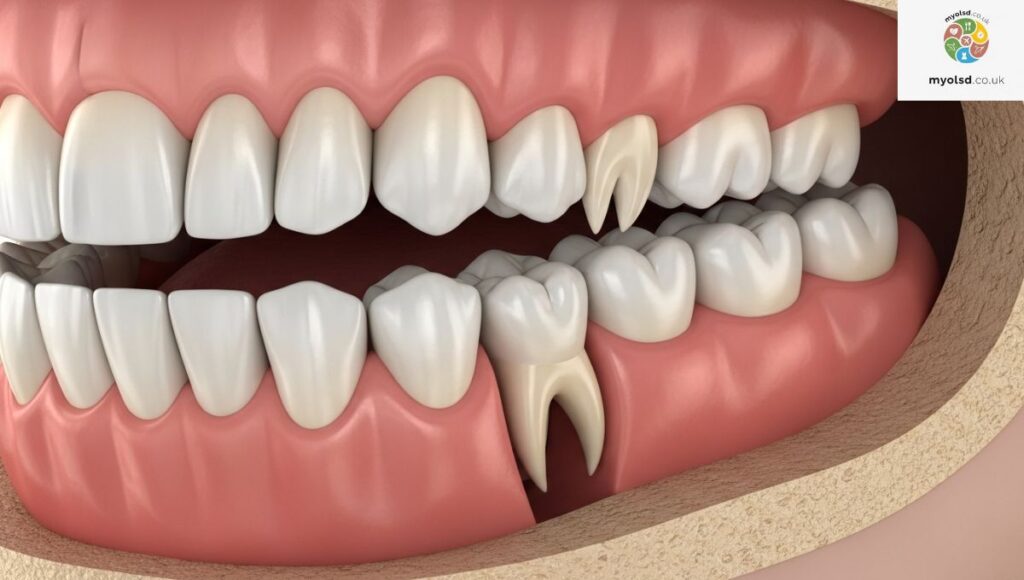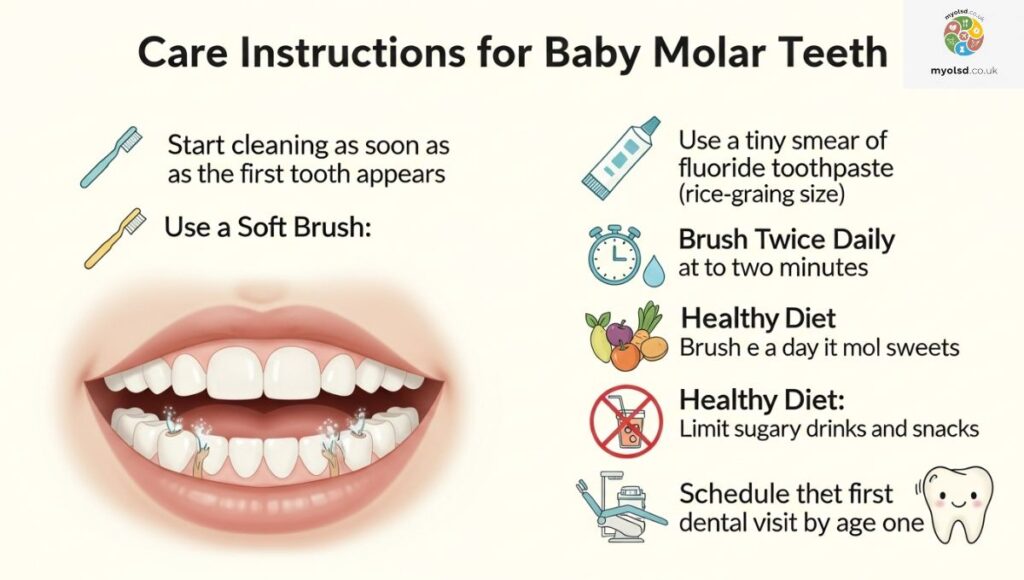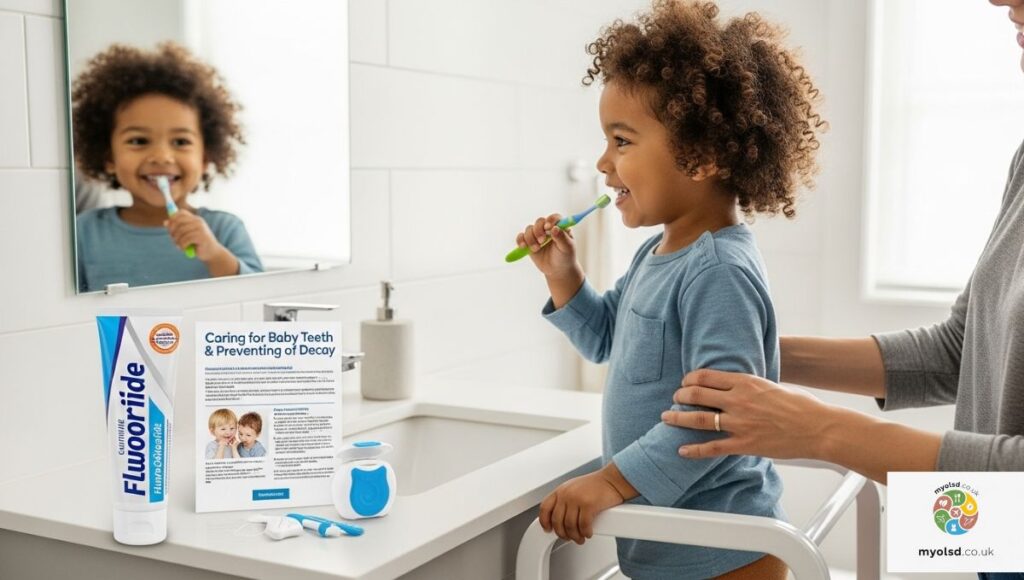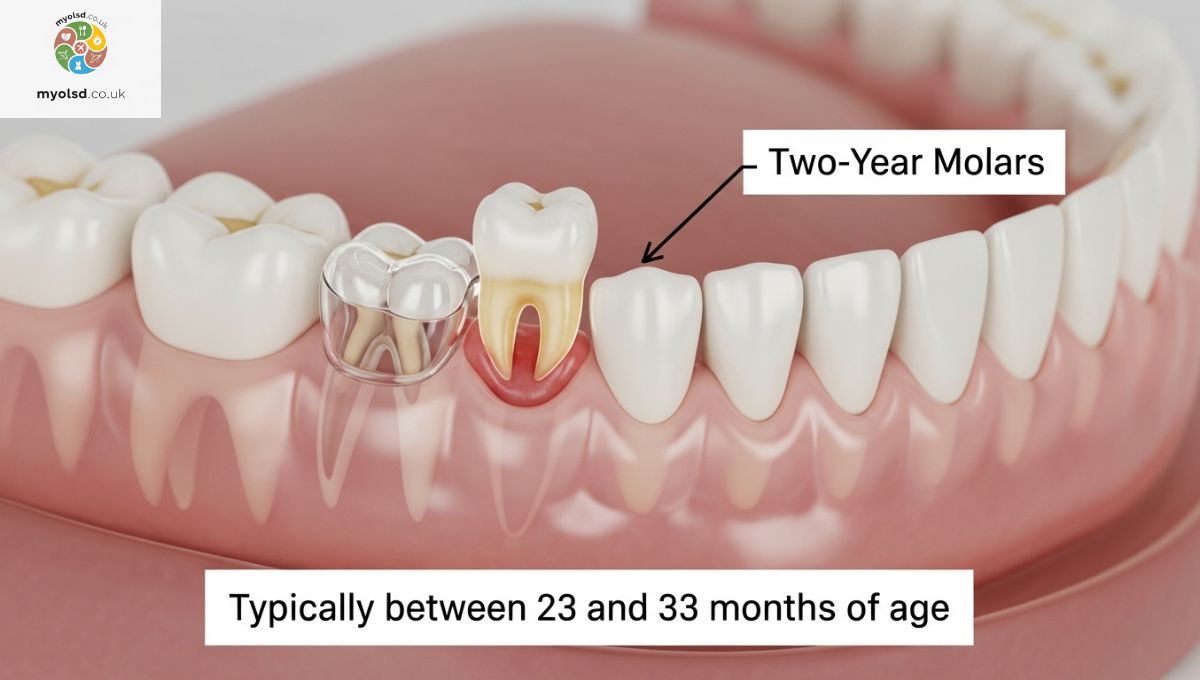Have you noticed your little one getting crankier than usual, drooling nonstop, or chewing on everything in sight? It can be stressful not knowing what’s going on, especially if you’ve already been through teething before and thought it was over. Many parents start to wonder,When do two year molars come in? and if this new round of fussiness is just another teething phase.
In this post, we’ll break down exactly when two-year molars usually appear, what signs to look out for, and how to make your child more comfortable during this stage. You’ll also learn a few easy tips to soothe the discomfort and keep your toddler’s smile healthy while those last baby teeth make their way in.
When First Molars Erupt

The first molars usually appear when your child is between 13 and 19 months old. These are known as the primary molars, and they’re essential for chewing food and helping the jaw develop properly. The process can be slow sometimes it starts early, and in other cases, it takes until around age two for those first molars to fully emerge.
So, when do toddlers get molars exactly? Every child is different. Genetics, nutrition, and even overall health can affect the timing of molar eruption. Most toddlers begin teething again around 25 to 33 months when their second molars, also known as two-year molars, start coming through.
During this stage, you may notice gum swelling, slight redness, or irritability. The process of how molars erupt involves the teeth slowly pushing through the gums which can cause tenderness and discomfort. While this might sound tough, remember: it’s a normal milestone in your child’s tooth eruption stages and will soon pass.
Symptoms of TWO-YEAR MOLARS
Recognizing two-year molars symptoms early can help you ease your child’s discomfort before it worsens. Common signs include pain, inflammation, and gum redness, often paired with irritability and fussiness.
Your toddler might also have a slight fever, increased drooling, or loss of appetite. Some parents even notice bad breath during this phase due to bacteria building up around swollen gums. Other typical toddler teething signs include chewing on objects, rubbing the face, or tugging at the ears all ways to cope with molar pressure.
While the symptoms can last a few weeks, they usually come and go as each molar breaks through. If your child’s discomfort seems extreme, consult a pediatric dentist to rule out an ear infection or other dental issue.
Pain Remedies and Comfort Tips
Teething pain can make even the calmest toddler cranky. Luckily, there are several safe pain relief methods you can use at home. Start by giving your child something cool to chew on, like a chilled teething ring or small ice cube wrapped in a washcloth. This helps numb the area and reduce swelling.
A gentle gum massage using a clean finger can also ease soreness. Some parents use teething gels like Orajel (benzocaine), but always check with your pediatrician first, as not all products are suitable for young children.
If your child is extremely uncomfortable, you may give children’s acetaminophen or ibuprofen under medical guidance. Keep an eye on their eating habits and hydration cold fruit purées or yogurt can soothe gums while keeping them nourished.
Read more Article: When Does Dysport Kick In?
Care Instructions for Baby Molar Teeth

Once those two-year molars start to emerge, proper dental care becomes even more important. Use a soft-bristled toothbrush and a pea-sized amount of fluoride toothpaste twice daily. It’s best to brush gently in circular motions to remove food particles from the new molars without hurting sensitive gums.
Teach your toddler the basics of brushing, but supervise closely to ensure thorough cleaning. Avoid sugary snacks and juices that can increase the risk of tooth decay. Regular pediatric dental checkups help monitor molar growth and overall oral health.
Remember even though these are baby teeth, they play a crucial role in maintaining spacing for permanent molars later on.
Actions for This Page
Here’s a quick recap:
- First molars typically erupt between 13 to 19 months, and second molars (the two-year molars) usually appear around 25 to 33 months.
- Common symptoms include gum swelling, drooling, irritability, and chewing behavior.
- Home remedies like gentle massage, cool teething toys, and proper dental hygiene can make the process smoother.
If symptoms last longer than usual or you notice bleeding, high fever, or rash, contact your pediatric dentist for professional advice.
Types of Teeth and Eruption Timeline
Children develop 20 primary (baby) teeth, usually by age three. These include incisors, canines, and molars. The molar eruption chart shows that the first molars come in before the canines, and the second molars follow later.
By age six, the permanent teeth begin replacing baby teeth in a process called tooth exfoliation. Understanding this timeline helps parents track dental growth and spot issues like delayed eruption or impacted teeth early.
Managing the Teething Process
Managing teething isn’t just about soothing pain it’s about keeping your child’s mouth clean and healthy through it. Offer teething biscuits or cold, soft foods like applesauce to help them chew comfortably. Keep the area clean by wiping gums with a damp cloth after meals.
Avoid frozen teethers or sharp toys that might injure the gums. If you notice eruption cysts, swelling, or gum tenderness, contact your pediatric dentist. They can recommend safe treatments or check for possible infection.
Read more Article: When Does Dysport Kick In?
Caring for Baby Teeth and Preventing Decay

Once those molars are out, start establishing a consistent dental routine. Brush your child’s teeth twice daily, floss between teeth that touch, and limit sticky sweets. Use fluoride toothpaste approved for toddlers and schedule checkups every six months.
Encouraging your child to drink water instead of sugary juices also prevents tooth decay and supports strong enamel. Teaching good habits early helps set the foundation for lifelong oral hygiene.
Permanent Teeth and Oral Development
Around age six, your child’s permanent molars begin to emerge, replacing their baby molars gradually. During this stage, jawbones grow and facial structure changes, creating space for larger teeth. Using mouthguards during sports and regular dental visits can protect developing teeth.
This transition marks a major dental milestone the move from primary dentition to a more mature smile. Consistent care now ensures a smooth, healthy progression into the next phase of dental growth.
Final Thoughts
Teething can be tough for both you and your toddler but it’s just one more milestone in your child’s amazing growth journey. Understanding when do two year molars come in helps you stay calm, prepared, and proactive as those molars emerge.
With patience, gentle care, and a few simple comfort tricks, your little one will soon be smiling with a full set of healthy baby teeth. Before you know it, those sleepless teething nights will be just another memory from your parenting adventure.
FAQs
How do you know if 2 year molars are coming in?
You can tell two-year molars are coming in when your toddler shows signs like swollen gums, drooling, irritability, or chewing on objects. They may also have mild sleep troubles or refuse certain foods.
Are toddler molars more painful?
Yes, toddler molars can be more painful because they are larger teeth pushing through the back of the gums. This pressure often causes more discomfort than earlier teething stages.
How to soothe 2 year molars?
You can soothe two-year molar pain with cool teething toys, gentle gum massages, or soft, cold foods like yogurt. Over-the-counter pain relief can help, but check with your pediatrician first.
Do toddlers get molars at age 3?
Most toddlers get their second molars between 25 and 33 months, so around age 2 to 3. The timing can vary slightly from child to child, which is completely normal.
How long does 2 year old molar pain last?
Molar pain can last anywhere from a few days to a few weeks as each molar breaks through the gums. The discomfort often comes and goes during this eruption period.
Which teeth are worst for teething?
The molars are usually the most painful because of their size and location. They take longer to push through and cause more gum pressure compared to front teeth.


1 thought on “When Do Two Year Molars Come In?”